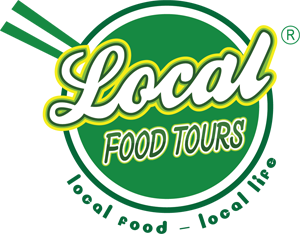Ke village is an ancient village in Dinh Ke commune of Bac Giang city now. The commune has eleven villages, of which, six are villages making banh da (rice paper with sesame). The people in the area often call it Ke rice paper, because the rice paper of Ke village is made with a unique flavour, unlike the rice paper everywhere. The people of Ke village make rice paper all year round, especially at the leisure time (without farm work).
At first, the job of making rice paper – a Hanoi street food was only a supplementary occupation of the people, gradually being professionalized in many families. They have earned a great profit and had a passion for this very familiar gift.
People on Vietnam food tour call the rice paper as Banh da ke because there is a bazaar selling rice paper at Ke intersection, along with the town of Bac Giang. The villagers of Ke village live mostly on rice paper making. A member of the family making rice paper said that, different from Sam Son rice paper (Thanh Hoa), coconut milk ice paper in Quy Nhon (Binh Dinh), technology and materials to make Ke ricepaper is very special.

Banh Ke is a long traditional product, containing finesse, subtlety and delicacy of the people. Making rice paper in the style of Ke villagers at the first look is very simple, but actually requires elaborate, clever hands. The main ingredient for making rice paper is rice. The rice must be selected carefully which is reserved for a long time. At the time, the rice resins transform into another form, which is condensed and dissolved into white grains.
The rice is washed very gently and then soaked in water. In the past, people often soak rice in the pottery pots until it is sour, and bring it out the drain and then to grind. They had to grind it so hard with the stone mortar. Today people grind rice by machine, easier than before a lot. Grind the rice thoroughly, so that the rice mixed with the water drops to dissolve into a smooth and white powder. Sometimes people cook rice and then grind it with the rice, then the rice will be spread out to cool down, not to be limp and not too touch. Milling cooked rice with rice makes the rice paper has the necessary plasticity.
After grinding the rice flour, the villagers Ke will make rice paper. The rice paper will be thịker than that in other places and banh da also will be grilled more. Especially, people in Ke village will make the rice paper two times. The first time, the rice paper will be cooked but still wet, they still put the cake on the surface of the cloth, and then continue to add a dough to the top until it is cooked completely. The rice paper is double coated will ensure the thickness.
When the cake is cooked, the cake is taken very cleverly so that the cake is not torn or distorted. The villager uses a long and large bamboo tube to remove the rice paper to the phen tre (bamboo plate), sprinkle black sesame and dried.
For more information/details: Hanoi traditional food, Vietnam cooking class
Before the rice paper comes to the consumer, it must be baked. This is the last stage, complex and requires sophistication and experience.
When enjoying, the cake has a delicious taste, sweet, crispy and fragrant. Each piece of crispy crumbs melted in the mouth makes us feel like the hometown flavours. The taste of the piece of paper rice is the taste of the land of the country, attracting any viisitors on food walking tour.

